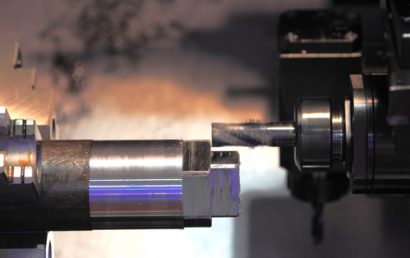Types Of Fluid Pumps & How To Protect Them
A hydraulic pump or a fluid pump is a machine that is responsible for transferring energy to the fluid passing through the machine by way of its moving parts. The” velocity” and the “pressure” of the fluid is the energy transferred to the fluid from the pump.
We are going to take a look at pumps that move different types of fluid and the best ways with which to protect them.
What Are the Criteria for Classification?
The flow pattern is part of the criteria for the classification of various types of pumps. This can be for commercial purposes or the purpose of analysis. The classification of hydraulic pumps or fluid pumps is based on a couple of criteria.
- The fluid supplied by the pumps
- The pattern of fluid flow through the pumps
They are also classified by fluid discharge rate and the power rating range. The criteria/categorization for flow is as follows:
- Turbo Pumps or Roto-Dynamic pumps are continuous flow
- Positive Displacement Pumps are intermittent flow
Turbo or Roto-Dynamic Pumps
Similar to hydraulic turbines in the way of construction, these kinds of pumps actually function in exactly the opposite manner. Vanes or blades are used as rotating impellers in turbo pumps and are fixed to a shaft that rotates. Continuous flow goes through these pumps. Turbo pumps, like turbines, also have a couple of classifications which are based on the directional flow:
- Axial Flow Pumps
- Centrifugal Focal Flow Pumps
Positive Displacement Pumps
In the case of this type of pump, the name says it all. Here, a precise fixed quantity of something (fluid) is being positively displaced. Fluid is pumped from one section of a machine to another part in a closed volume positive displacement system. The construction of these pumps is unique and involves both fixed and moving parts. Positive displacement pumps open at one end, take fluid in, enclose the fluid, and discharge the fluid through the opposite end as it opens. These pumps can be further broken down into subcategories and classified according to the pattern of motion involving the volume forming parts enclosed within:
- Rotary Positive Displacement Pumps – these pumps take in the fluid on one end and discharge it at the supply end. The moving cavity is formed by rotating parts which carry the fluid. Based on the number of rotors, these pumps are further broken down into two types: multiple rotor pumps and single rotor pumps. Various design features are available on both of these types of pumps; most commonly, gear pumps and screw pumps.
- Reciprocating Positive Displacement Pumps – in these pumps, the moving parts responsible for fluid displacement have a reciprocating motion. The pumps are broken down even further (based on the reciprocating part) into two categories: diaphragm pumps and piston pumps. Various features are available. Different variants on these pumps are as follows: triplex, duplex, double discharge, and single discharge.
At A&A Coatings, we understand that when pumps break down, businesses suffer. In the competitive world of industry, lengthy downtimes must be avoided at all costs. With over 70 years of experience, we can help you protect all your pumps – no matter what classification they fall under. Talk to us today at A&A Coatings to see how we can be of assistance.



